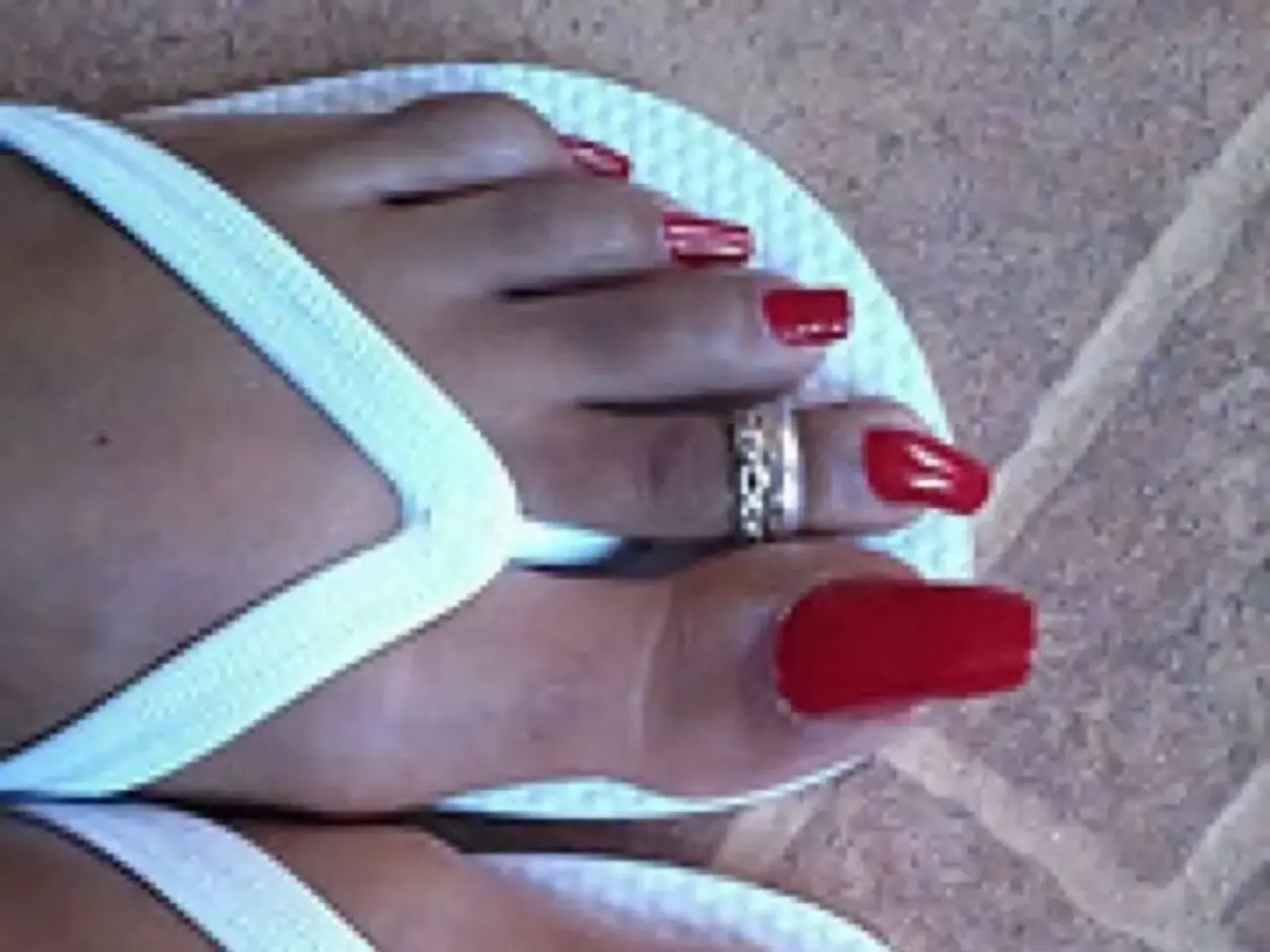Easy Ways to Treat an Ingrown Toenail at Home
In the world of foot health, ingrown toenails can be a common and painful nuisance. But fear not, for a modern solution has emerged that promises effectiveness and quicker procedural times.
An ingrown toenail occurs when a toenail grows into the surrounding skin, causing pain and potential infection. The most common reasons for this condition, according to a recent study, are cutting the nails too much on the sides, having sweaty feet, and having thick skin around the nails [1].
80% trichloroacetic acid (TCA) is being hailed as an effective chemical agent for treating ingrown toenails, particularly when used for chemical matrixectomy after partial nail avulsion. This modern approach is gaining popularity due to its high success rates in preventing regrowth of the problematic nail portion [2].
Research and clinical practice indicate that 80% TCA applied to the nail matrix can achieve success rates similar to those of the traditionally used 88% phenol [2][1]. In a study conducted by researchers from a hospital in Portugal, 133 patients with a total of 197 ingrown toenails were treated with 80% TCA, and only 3 toenails had the problem recur after the treatment [1].
Clinics employing 80% TCA after partial nail avulsion report high success rates in matrixectomy, indicating it effectively destroys the nail matrix responsible for the ingrown toenail recurrence [2]. Compared to traditional surgical methods without chemical matrixectomy or less potent agents, 80% TCA chemical matrixectomy is associated with favorable outcomes such as lower recurrence rates and fewer complications [1][2].
However, it's important to note that 80% TCA should be used with caution. Those with diabetes or poor circulation should consult a healthcare professional immediately regarding ingrown toenails [3].
So, how can one treat an ingrown toenail at home before seeking professional help? Gently soaking and lifting the ingrown toenail can help resolve the issue without the need for fancy tools or a doctor's visit. After soaking, a clean, soft piece of cotton can be used to gently lift the edge of the ingrown toenail, creating a cushion between the nail and the skin [4].
Trimming toenails straight across and avoiding cutting them too short can also help prevent ingrown toenails from recurring [5]. Keeping the affected foot clean by washing it daily with mild soap and water can help prevent infection [6].
If home remedies for ingrown toenails have not shown improvement after a few weeks, it might be time to seek professional help [7]. Soaking the affected foot in warm water with Epsom salt can help relieve pain and soften the ingrown toenail [8]. Wearing comfortable shoes that fit properly can help prevent the development of ingrown toenails by providing enough room for toes to wiggle [9].
In summary, 80% TCA is an effective and modern alternative to phenol matrixectomy for ingrown toenails, offering comparable success and potentially quicker procedural times. Its use after partial nail removal is widely accepted in clinical practice with good prospective data backing its efficacy [1][2]. Always remember, if you notice signs of infection like redness, pus, or increasing pain, seek help from a healthcare professional immediately.
In the realm of health and wellness, the topic of skin care extends beyond just the face, as solutions like 80% trichloroacetic acid (TCA) are being used for the treatment of ingrown toenails, a common health issue. Adequate nutrition, such as maintaining a balanced diet rich in essential vitamins and minerals, can support overall health, potentially improving skin condition and contributing to healthier toenails.




